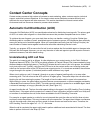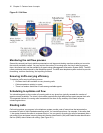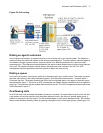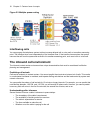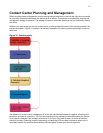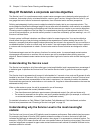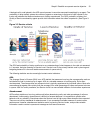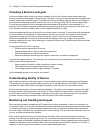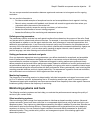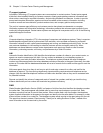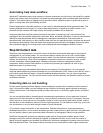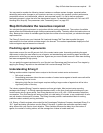22 Chapter 3 Contact Center Planning and Management
Step #1 Establish a corporate service objective
The Service Level % is a performance metric contact center managers use to determine what proportion of
customers, that contact you by voice/email/chat/fax, receive “good” service. Using the Service Level %, you
can gauge the level of service customer's experience, from a historical and a real-time perspective.
Defining and adequately funding a service objective should be closely tied to your corporate mission. The
service objective identifies the average length of time a caller who has obtained a trunk waits for an available
agent. It is the basis for planning and budgeting and links the resources you require to your service objectives.
Choosing a service objective is the first step in a comprehensive planning and management solution. Once
you set a service objective, you should routinely access it to see how consistently you are meeting it, on a 15-
minute or half-hour basis.
Contact centers in different industries use different criteria for measuring service. Your service objective
should reflect the type of service being provided and the expectations of callers seeking the service. For
example, a company that sells magazine subscriptions has less to lose in the outcome of any one call than a
car dealership does. A caller to a credit card “lost or stolen” line might expect different service than a caller to
a customer service department at a bank. Contact center metrics across industries are designed to reflect
this.
Performance targets must suit the primary function of a contact center. In revenue-based contact centers
where agents sell products or services, the net revenue per call is considered when defining a service
objective. Revenue-based contact centers strive to provide a high level of service with minimal blocking and
delays.
Understanding the Service Level
The Service Level applies to all of the media types (voice/email/chat/fax) and is expressed as a percentage of
a statistical goal: it specifies the Service Level Time and the Service Level % goals for the queue or agent
group.
The Service Level is expressed as X percent of calls handled in Y seconds or less, such as 80 percent of calls
handled in less than 20 seconds. Why is Service Level the standard measurement of service? Service Level
provides the most accurate representation of the callers’ experience. It is ultimately the caller who decides
what constitutes good service, and whether or not to end a call. It applies to inbound transactions that must be
addressed as they arrive.
When a caller enters a queue, the call is processed in one of three ways:
• An agent answers the contact (handled contact).
• The client disconnects before an agent answers (abandoned contact) (for calls and chats only).
• The contact is removed from the queue, and sent to another handling point (for example, to voice mail,
an automated attendant, or another queue), (Interflowed contact).
For detailed information on Calls Offered, Calls Handled, Calls Abandoned, Calls Interflowed, and other
Service Level parameters see “Choosing a Service Level goal” on page 24.
Understanding why the Service Level is the most meaningful
statistic
The Service Level is one of many ACD statistics used to measure performance. Each statistic has its purpose.
For example, the Grade of Service (GOS) statistic relates the number of trunks to the level of traffic and
indicates the likelihood an attempted call will receive a busy signal. It is expressed as a decimal fraction. For
example, a GOS of P.02 means a caller will have a two percent chance of receiving a busy signal. Since trunk
costs are insignificant compared to agent costs contact centers are well advised to schedule sufficient trunks,
abandons should be minimal.




